rImageShield
rImageShield
A simple and easy-to-use image message embedder.
What can I do with rImageShield?
With rImageShield you can protect/sign your images embedding custom copyright/license messages.
Message data distribution inside image can be customized, following an Uniform or Pseudo-Random distribution around the pixels; multiple other parameters can also be configured. Message can be compressed and encrypted with a password for maximum security.
Using rImageShield messages can be recovered, it automatically detects if one image contains a message on loading.
Features
- Multiple input image file formats:
.png,.qoi,.bmp,.tga,.raw - Editable text input message, up to 256 characters
- Message compression and encryption support
- Uniform and PRNG data distribution settings
- Detailed image, message and distribution information
- Multiple message visualization modes: ASCII, Hexadecimal, Grayscale
- Visual shield watermark option available
- Export image as
.png,.qoior.raw - Multiple UI styles supported, select your best style
- Command-line support for image message recovering
- Completely portable (single-file, no-dependencies)
Basic Usage
Steps to add a message to an image:
- Load an image by drag&drop or press the
Open Filebutton on top toolbar - Edit text message on provided textbox, grid shows message bytes details
- Config message compression/encryption options (for extra data protection)
- Config message data distribution options on right panel, uniform or pseudo-random
- Export image with embedded message (
.png,.qoior.raw)
Keyboard/Mouse Shortcuts
F1- Show Help windowF2- Show About windowF3- Show Issue Report window
File Options
LCTRL + O- Load image fileLCTRL + S- Save/Export image fileLCTRL + X- Close image file
Message Controls
LCTRL + R- Reset message to defaultLCTRL + C- Copy message to clipboardLCTRL + V- Paste message from clipboard
Image controls
MOUSE LEFT BTN- Image PanningMOUSE WHEEL- Zoom in/outUP-DOWN-LEFT-RIGHT- Move ImageF- Zoom and center imageLCTRL + MOUSE MBTN + UP- Soft zoom inLCTRL + MOUSE MBTN + DOWN- Soft zoom outLCTRL + LSHIFT + MOUSE WHEEL- Snap zoomESCAPE- Close Window/Exit
Command-line
WARNING: rImageShield command-line interface only supports message loading.
Batch image message embedding functionality is provided as a separate license.
USAGE:
> rimageshield [--help] --input <imagefile.ext> --password <password>
OPTIONS:
-h, --help : Show tool version and command line usage help
-i, --input <imagefile.ext> : Define input file for message loading
: Supported image formats: .png, .qoi
-p, --password <password> : Define password for encryption (max 16 bytes)
EXAMPLE:
> rimageshield --input image .png --password "123456"
Technologies
This tool has been created using the following open-source technologies:
- raylib - A simple and easy-to-use library to enjoy videogames programming
- raygui - A simple and easy-to-use immediate-mode-gui library
- rpng - A simple and easy-to-use library to library to manage png chunks
- tinyfiledialogs - File dialogs for desktop platforms
- monocypher - An easy to use, easy to deploy crypto library
Handmade Software
rImageShield is handmade software, it has been meticulously developed using the C programming language, with great attention put on each line of code written. This approach usually results in highly optimized and efficient code, but it is also more time-consuming and require a higher level of technical skills. The result is great performance and small memory footprint.
rImageShield is self-contained in a single-executable of about 1 MB, it could fit on a floppy disk.
rImageShield could be customized on demand for corporate users, if your company needs a custom version, just get in touch: ray[at]raylibtech.com
Issues & Feedback
You can report tool issues and feedback at https://github.com/raylibtech/rtools
License
The use of rImageShield desktop application is subject to the terms and conditions of the End User License Agreement.
By using rImageShield, the user agrees to be bound by the terms of the EULA.
Check included End User License Agreement document for details (EULA.txt).
Copyright (c) 2022-2024 raylib technologies (@raylibtech)
| Status | Released |
| Category | Tool |
| Platforms | HTML5, Windows, Linux |
| Rating | Rated 5.0 out of 5 stars (2 total ratings) |
| Author | raylib technologies |
| Made with | raylib |
| Tags | image, raygui, raylib, security, steganography, tool, viewer |
| Average session | Days or more |
| Languages | English |
| Inputs | Keyboard, Mouse |
| Links | Homepage, Twitter/X, Steam, LinkedIn |
Purchase
In order to download this tool you must purchase it at or above the minimum price of $19.95 USD. You will get access to the following files:
Development log
- rImageShield v2.0 published!Apr 09, 2024
- rImageShield v1.0 published!Mar 05, 2022

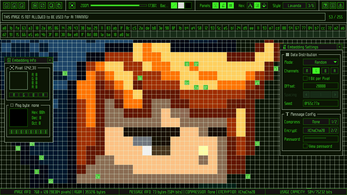
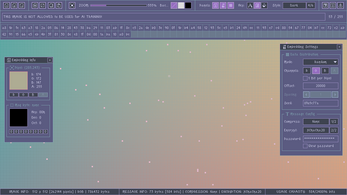
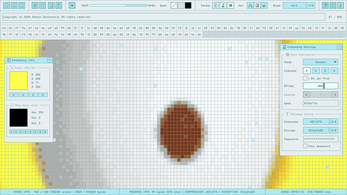
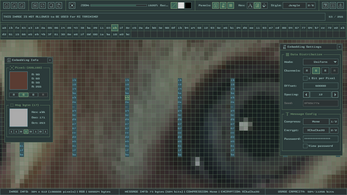
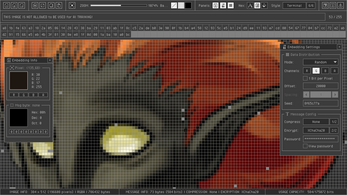
Comments
Log in with itch.io to leave a comment.
image drag and drops don’t seem to work on my end. using floop, which is a firefox fork
great tool for sneakily crediting your artwork
thanks! glad you like it! 🙂